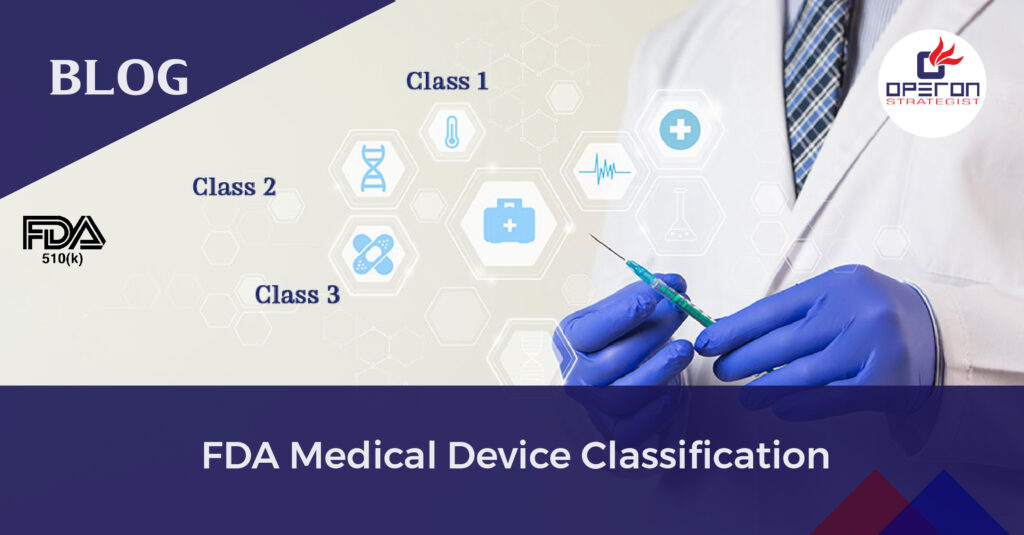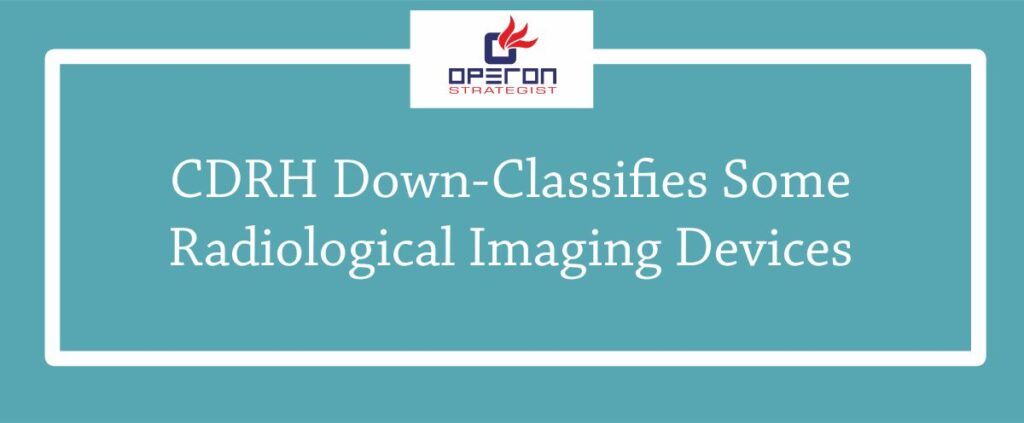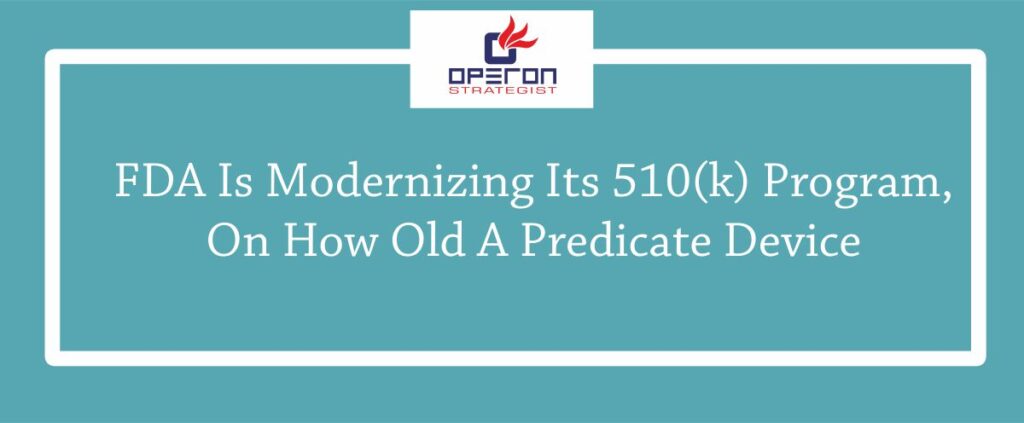FDA Medical Device Classification states that a CLASS I MEDICAL DEVICE, as well as Class II and III, are “an instrument, apparatus, implement, machine, contrivance, implant, in vitro reagent, or other similar or related article, including a component part or accessory” that’s recognized as a pharmaceutical or supplement, intended as a diagnoses, cure, or preventive treatment of a disease, with the intention to affect the structure of a human or animal body.
The range of medical devices regulated is immense. Such things as pacemakers, cardiovascular stents, respiratory ventilators, surgical trays, breast implants, diagnostic tests (e.g., pregnancy tests, blood glucose tests, etc.) or relatively simple devices such as tongue depressors, patient scales, and elastic bandages need FDA Medical Device Classification and approval. The US FDA regulates all medical devices marketed in the US, which are grouped into three broad classes. Any medical device approved by the FDA Medical Device Classification as Class I, II, or III depending on the device’s risk, invasiveness, and impact on the patient’s overall health. But where are the lines drawn between each of these three classes. The US FDA’s classification guidelines can be highly confusing to medical device manufacturers with limited exposure to the system.
As per the classification if your device Class 1 or Class 2 and if it is not exempt, a 510(k) will be required for the marketing. Manufacturer get stuck 510 (k) clearance process, as a FDA 510(k) clearance consultant we provide guidance to manufacturer in creating 510 (k) dossier.
There is an enormous difference in the optimal path to market for manufacturers depending on how your device is grouped. Class I devices are subject to far fewer regulatory requirements than Class II or III devices. By understanding the differences in the FDA Medical Device Classification, you can understand how your device will be grouped. With this knowledge in hand, medical device manufacturers in the premarket stages can better prepare and allocate the resources needed for regulatory approval.
FDA Medical Device Classification
FDA Medical Device Classification is different from the EU MDR classification. The classification method and criteria also differ. FDA 510(k) device classification depends on the intended use and indications of the use of the device.
The US FDA has established classifications for approximately 1700 different generic types of devices and categorized in 16 medical specialties. Each of these generic types of devices is assigned to one of the three regulatory classes based on the level of control necessary to assure the safety and effectiveness of the device.
Class I – Low Risk (General Controls)
Devices are subjected to a comprehensive set of regulatory authorities called general controls that are applicable to all classes of devices.
- Reusable surgical Instruments
- Hospital Furniture’s
- OT equipment’s
Class II – Moderate Risk (General Controls & Special Controls)
Devices for which general controls, by themselves, are insufficient to provide reasonable assurance of safety and effectiveness of the device, and for which there is sufficient information to establish special controls to provide such assurance.
- Urology Catheters
- Patient Monitors
Class III – High Risk (General Controls & Pre-market approval)
Devices for which general controls, by themselves, are insufficient and for which there is insufficient information to establish special controls to provide reasonable assurance of safety and effectiveness of the device. Class III devices typically require pre-market approval (PMA).
- PTCA Catheters
- Stents
- Heart Valves
Why is FDA Medical Device Classification Important?
Determining the correct classification of your medical device is of crucial importance in all stages of the device’s life cycle. The classification of your device will determine the regulatory requirements that you need to meet, in order to market said device to the USA. Moreover, knowing the correct classification and complying with general and special controls will save you a lot of resources. First, necessary steps will be taken to make a compliant product from early stages, avoiding costly revisions; and second, complete documentation ensuring compliance will be readily available, resulting in timely review decisions and quicker medical device approval by the FDA. In conclusion, proper search of medical device classification is a big part of overall successful results.
To confirm a medical device classification, in addition to understanding what if any exemptions exist, the applicable device regulation number needs to be identified. The FDA maintains a device classification database and it is possible to find the applicable regulations either via identifying the appropriate “panel” or equivalent device. Some Class I devices are exempt from the premarket notification and/or parts of the good manufacturing practices regulations. Approximately 74% of the Class I devices are exempt from the premarket notification process. These exemptions are listed in the classification regulations of 21 CFR and also have been collected together in the Medical Device Exemptions document.
The classification of your device will determine the regulatory requirements that you need to meet, in order to market said device to the USA. our expert team of medical device regulatory consultant can classify your devices and provide regulatory assistance according to the class of medical device.
FAQ
A 510K is a Premarket Submission made to FDA to state that the medical device which is to be marketed is at least as safe and effectual that is considerably equal to a legally marketed device that is not subject to PMA. A PMA is a premarket approval it is the process of scientific and regulatory review analyse the safety and effectiveness of Class III medical device the applicant must receive the FDA approval of its PMA application prior to the marketing the device. Companies doing 510k submissions have to compare their devices to one or more legally marketed devices and make and support their substantial equivalence claims. A lawfully marketed device is a device that has been legally marketed or a device that has been reclassified from Class III to Class II or Class I SE through the 510k process, or else a device that was granted marketing authorization.
What\’s the best way to expedite FDA approval for a medical device?
The best way to expedite FDA approval for a medical device is to First research your requirements. As with any project, gathering specifications – in this case regulatory registration requirements – is paramount. Most firms have heard of the 510(k) Premarket Notification pathway, but there are others. If you cannot identify a 510(k) Predicate device that demonstrates Substantial Equivalence, then formally reach out to the FDA. There are outreach tools to help identify which pathway is right for you.
How can I learn the FDA drug and medical device approval process fast?
In order to get a product approved by FDA your product has to undergo product registration since it is the legal process that your product has to take for you to sell them legally to the public and that it is safe for consumption. Although they have general SOPs, like getting the license to operate (LTO) and the certificate of product registration (CPR) that will be issued to you by FDA.
How do I know if a medical device is FDA approved?
You can search the FDA website for approved medical devices. Devices @FDA provides one place where you can find official information about FDA cleared and approved medical devices. You can use Devices @FDA to: Find out if and when medical devices were cleared or approved by FDA. Read summaries of medical devices currently on the market.
Which agency regulates medical devices in USA?
FDA regulates the sale of medical device products (including diagnostic tests) in the U.S. and monitors the safety of all regulated medical products. In the U.S., FDA regulates the sale of medical device products. Before a medical device can be legally sold in the U.S., the person or company that wants to sell the device must seek approval from the FDA. To gain approval, they must present evidence that the device is reasonably safe and effective for a particular use.
Who approves medical devices in USA?
FDA regulates the sale of medical device products (including diagnostic tests) in the U.S. and monitors the safety of all regulated medical products. Before a medical device can be legally sold in the U.S., the person or company that wants to sell the device must seek approval from the FDA. Sold in the U.S., the person or company that wants to sell the device must seek approval from the FDA.
- adminhttps://operonstrategist.com/author/admin-2/
- adminhttps://operonstrategist.com/author/admin-2/
- adminhttps://operonstrategist.com/author/admin-2/
- adminhttps://operonstrategist.com/author/admin-2/




